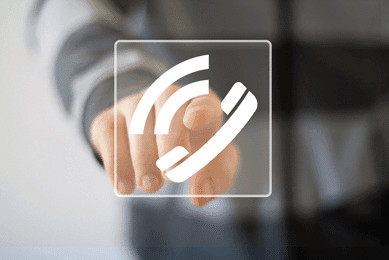 It is easy to feel overwhelmed by the changes that have redefined SMB communications in the last couple of decades. But – for better or worse – there are a lot of similarities too.
It is easy to feel overwhelmed by the changes that have redefined SMB communications in the last couple of decades. But – for better or worse – there are a lot of similarities too.
Last week, we wrote about copper wiring and how many businesses are still limited by copper connectivity. But there is another aspect of telephonic communications in the United States, which has not changed at all: the telephonic infrastructure.
Most areas in Atlanta don’t have telephone lines running above-ground. Those lines were buried beneath the ground, and the innocuous little green box you see in front of your house or down the block – that has been there for a long time.
Inside that box, you would see a bunch of wires – wires destined to each residence on the street. Those boxes are still responsible for the phone numbers originating in their area. This has not changed at all.
This fundamental aspect of our telephonic system is the reason why VoIP providers and communications technologies behave how they behave. They build processes and software on top of this existing infrastructure.
To deal with the restriction of telephone boxes and the needs of cellphones and smartphones, telecom carriers have made a small addition to the telephone box down the street. They have installed a little piece of equipment next to those boxes, which converts the signal back to a digital signal, called Session Initiation Protocol (SIP). Once converted to SIP, the digitized signal can transmit anywhere in their network – to either a phone number, or an IP address – like your computer.
Let’s say you call a smartphone with an Atlanta number. The call goes directly to the same box where the number originated. Then it routes to wherever you are via the carrier’s network. That might sound inefficient. Well, it is. We are still operating under the same rules that were set up when telephone lines were laid down.
But SIP enables carriers to offer free in-network long distance. More on free long distance in VoIP Basics (4).
Call our business managed IT services department directly at (404) 777-0147 or simply fill out this form and we will get in touch with you to set up a getting-to-know-you introductory phone call.
Fill in our quick form
We'll schedule an introductory phone call
We'll take the time to listen and plan the next steps
11285 Elkins Rd Suite E1, Roswell, GA 30076
© Copyright 2024 Centerpoint IT. All Rights Reserved. Website in partnership with Tech Pro Marketing. | Privacy Policy
Get Immediate Help For All Your Technology Issues (404) 777-0147

If you want our team at Centerpoint IT to help you with all or any part of your business IT, cybersecurity, or telephone services, just book a call.
Fill in your information below to get started today.
"*" indicates required fields
Fill in your information below to schedule now.
"*" indicates required fields
Before your organization commits to 1, 2, 3 or even longer managed IT services contract, understand what you’re getting. Centerpoint IT gives you the facts in our Managed IT Services Buyer’s Guide.
Enter your information below and we’ll send it over.
"*" indicates required fields

We are turning 15 and want to celebrate this milestone with you because without you this would not have been possible. Throughout this year look for special promotions on services and tools aimed at Making IT Simple for You so you can focus on your business.

We are turning 15 and want to celebrate this milestone with you because without you this would not have been possible. Throughout this year look for special promotions on services and tools aimed at Making IT Simple for You so you can focus on your business.
https://calendly.com/centerpoint-it/discovery-call